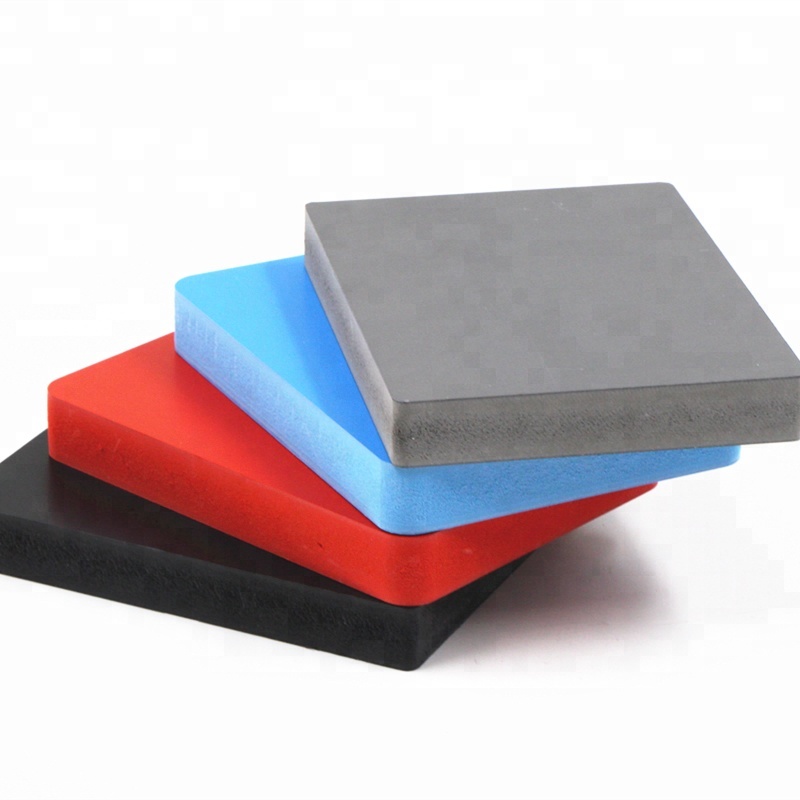Characterization of Imbalances Among Additives in PVC Foam Products

1. Stabilizers
The most commonly used stabilizers in PVC foam products are One-Pack Lead stabilizers and calcium-zinc stabilizers. With increasing environmental regulations and the improving cost-performance ratio of calcium-zinc stabilizers, their application is becoming more widespread.
Insufficient stabilizer: Leads to yellowing, scorching, increased brittleness, reduced strength, and low foaming rate.
Excess stabilizer: Causes premature decomposition of the foaming agent, gas may escape through the feed or vacuum holes, and structured cavities may crack or exhibit shrink marks.
2. External Lubricants
The most widely used external lubricants in foam products are paraffin wax and PE wax. Since paraffin wax tends to migrate to the surface, PE wax is usually preferred.
Insufficient external lubrication: Makes it difficult to control the temperature in zones 4 and 5 of the extruder, leading to overheating, large and merged bubbles, yellowing, and a rough board surface. Frictional heat increases, causing material decomposition and yellowing.
Excess external lubrication: Results in poor plasticization, mold cavity scaling, surface blooming, white streaks, uneven wall thickness, and periodic surface defects.
3. Internal Lubricants
Common internal lubricants include stearic acid, 60, monoglycerides, and 316.
Insufficient internal lubrication: Leads to poor dispersion, uneven plasticization, inconsistent product thickness, thicker center than edges, white streaks, sticking to mold cavities, and localized overheating.
Excess internal lubrication: Causes brittleness, reduced heat resistance, and may convert into external lubrication under certain conditions, leading to imbalance.
Both internal and external lubricants insufficient: High melt viscosity, large plasticizing torque, severe melt sticking, yellow decomposition lines, poor surface smoothness, and reduced mechanical properties.
Both internal and external lubricants excessive: Low torque, under-plasticization, good surface smoothness but poor lamination at pressing points, severely compromising mechanical properties.
More external and less internal lubricant: Significantly extended plasticization time, reduced torque, difficult molding, and brittleness.
More internal and less external lubricant: Shortened plasticization time, severe sticking, reduced thermal stability time, and yellow decomposition lines on the surface.
4. Calcium Carbonate (CaCO₃)
For foam products, light calcium carbonate with a particle size around 1200 mesh is preferred. It easily absorbs moisture, leading to surface bubbles and silver streaks, affecting appearance and physical properties, so it should be carefully stored during rainy seasons.
Excessive particle size: Poor mixing, delayed plasticization, and lower screw torque.
Too fine particles: Prone to agglomeration, forming large particles with similar consequences.
Insufficient dosage: Lack of nucleation centers, fewer cells, and lower foaming ratio.
Excessive dosage: Lower resin content, reduced melt strength, and cell rupture on the cross-section.
5. Acrylic Polymers - Foaming Regulators
Foaming regulators refer to acrylate processing aids with viscosity above 10. Wood-plastic foam products like eco-wood and wall panels usually use fast-plasticizing types, while foam boards, especially for cabinets, use slow-plasticizing, high melt-strength types.
Insufficient regulator: Poor melt strength, uneven cell structure, cross-section cells, and increased density.
Excess regulator: Excessive melt strength hinders bubble expansion, increases density, and causes wave patterns and distortion.
6. Foaming Agents
The most commonly used foaming agents are AC (yellow) and NC (white). AC releases heat during decomposition, causing yellowing and a slight ammonia odor; NC absorbs heat and is odorless. Therefore, they are usually used together in a balanced manner.
Insufficient foaming agent: Low foaming rate, few cells, and high density.
Excess foaming agent: Reduced melt strength, molding difficulty, and visible cell structure in cross-section. Beyond a certain amount, density may even increase.
Too much AC and too little NC: Large and round bubbles appear in the cross-section.
Conclusion
As shown, each additive has an optimal dosage range and interacts with others. Too little may be ineffective; too much may cause harm. In practice, repeated trials are necessary to maximize the synergistic effect of all materials, find the optimal balance point, enhance melt strength and foaming efficiency, extend machine uptime, and boost product output.





